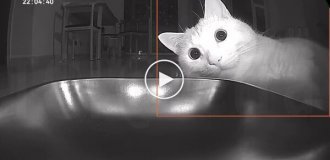Death masks have been made for a very long time; they trace their history back to funeral masks, which most often did not have a portrait resemblance.
At first they were made from wax, later from plaster.
Here are the death masks of many historical figures and famous people: from Mary Stuart, Michelangelo to Michael Jackson.
Brief background
Funeral masks
In ancient times, when the embalming technique did not allow preserving the face, during burials funeral masks made of gold, wood and other materials, even whalebone among the Aleuts, were placed on the face of the deceased.
They were made from precious metals or stones (also from wood, plaster or clay, which in some cultures was placed on the face of the deceased before burial.
Unlike a cast, a portrait likeness in a funeral mask is not necessary.

Golden “mask of Agamemnon”, Cretan-Mycenaean culture, 16th century. BC e.

Mycenae.XVI century. BC e.

Mask of Tutankhamun.

Mummy mask.
Late Period (712 BC – 332 BC)

Boy mummy mask.
End of the 18th Dynasty, second half of the 14th century BC. e.

Death masks
Wax masks of ancestors (Imagines In Ancient Rome, death masks or sculptural portraits of deceased relatives of noble Romans, made of wax and stored in special cabinets (a kind of family altars.
Polybius points out that the masks were worn by people of suitable height and build.
Their clothing corresponded to the position and social position that the person depicted occupied during his lifetime. In this form, they accompanied the funeral procession in chariots, and when it reached the Forum, the “ancestors” in masks sat around the deceased in armchairs.
Thus, when someone died, everyone who had ever been part of that family was with him” (Pliny).

A colossal female statue has been restored as the muse of Melpomene. Marble, Roman artwork, ca. 5th century BC. Possibly they were part of the Pompeii theater in Rome.
Those deprived of civil rights for any offense lost the right to have death masks; relatives excluded their images from the family list.
This was the case with the image of Brutus and Cassius.

Funeral mask. Bronze, Romania.
Kunsthistorisches Museum, Antikensammlung, Vienna, Austria

Funeral mask, plaster, Egypt. Picardy Museum in Amiens

Funeral mask, plaster, Egypt. Picardy Museum in Amiens

Mummy masks of the deceased wife; Roman Egypt; colored crystal plaster; liebieghaus building, Frankfurt am Main

Rome
Gaius Iulius Caesar

Fayum portraits
These are funerary portraits in Roman Egypt of the 1st-3rd centuries AD. e.
They got their name from the site of the first major discovery in the Fayum oasis in 1887.
Portrait of a boy named Eutyches.
from the collection of the Metropolitan Museum of Art
Early Fayum portraits were made using the encaustic technique (from the Greek word ?????? - I burn), which was very common at that time. This is wax painting with molten paints.
They are in the collections of many museums around the world, including the British Museum, the Louvre and the Metropolitan Museum of Art in New York.

Fayum portrait.

A magnificent collection of 23 Fayum funerary portraits in the State Museum of Fine Arts named after A. S. Pushkin in Moscow

Death masks

A death mask is a cast made of plaster or other plastic material taken from the face of the deceased.
The original cast served as a mold for casting a death mask in gold, bronze, etc.
This custom existed among many peoples and often these masks bore little resemblance to the face of the deceased. With the development of sculpture, death masks began to be removed as preparatory material for the sculpture of statues, busts and tombstones.

Karl Konstanz Victor Fellner.


Mary Stuart

Niccolo Machiavelli. Florence, Italy.


Lorenzo Medici

Michelangelo
Daniele da Volterra (1564)

Fillippo Bruneleschi

This is the wax death mask of Oliver Cromwell, recently exhibited at the British Museum in London. This is not the original death mask, but it was made sometime between 1658 and 1753 (see British Museum)

Oliver Cromwell's death mask at Warwick Castle


Dante

Borgia


William Shakespeare
In 1842, a death mask was found by a junk dealer in a store in Darmstadt, Germany, with a 99.9% chance of being a William Shakespeare mask. The mask dates back to 1616 (Shakespeare died on April 23, 1616), and features the writer's high forehead, prominent nose and beard.

Sir Isaac. Scientific activity continued almost until the day of his death. He chaired a meeting of the Royal Society in London for the last time in March 1727, but the trip tired him. The following days brought great pain; he fell into a coma and died on 20 March at his home in Pitt Street, Kensington, where he had moved to escape London's air pollution.


Frederick II

Marat


Napoleon's original death mask was created on May 7, 1821, just a day and a half after his death on St. Helena at the age of fifty-one.

Napoleon III

BEETHOVEN
Cirrhosis of the liver led to jaundice and on March 26, 1827, Beethoven opened his eyes, raised his right hand high, as if in greeting, and fell dead.
Joseph Dannhauser, a young artist, made the mask on March 28, two days after the composer's death, and one day before his funeral.

The contrast with Beethoven's 1812 lifetime mask is striking.


Chopin
Frédéric Chopin: death mask created by Auguste Clésinger on October 17, 1849 (collection by Jack Gibbons)

Chopin

Robespierre

Goethe.

Mozart 1756 – 1791

Sheet

DEATH MASK OF IMMANUEL KANT

John Keats
The great romantic poet lived out his last days and died in Rome on February 23, 1821. His death mask is currently on display in his home in Piazza di Spagna.

Mendelssohn.

Walter Scott.

Wagner

Lincoln never actually had a death mask, but he did have two masks made during his lifetime. The first was taken during Lincoln's visit to Chicago in the early spring of 1860. The second mask was created on February 11, 1865. If you compare them, it immediately becomes clear how much the Civil War affected his health.

Benjamin Franklin. Franklin died on April 17, 1790. He was eighty-four.

Lifetime mask.
The mask was made in 1785 by French sculptor Jean Antoine Houdon, when Washington was fifty-three. Washington died on December 14, 1799, at his home in Mount Vernon, when he was sixty-seven.

Alfred Nobel
The founder of the Nobel Peace Prize died on December 10, 1896. His original death mask is located at his residence in Karlskoga, Sweden.

Death mask of George Bernard Shaw
Modeled by Charles Smith, England, 1950
George Bernard Shaw (1856-1950), born in Dublin but lived most of his life in England, is one of Britain's greatest playwrights.

Hitchcock

MICHAEL JACKSON

John Dillinger is a bank robber.
The mugger, who spawned numerous urban legends, conspiracy theories and rumors of immortality, died on July 22, 1934 after federal agents moved to arrest him as he left a movie theater. Dillinger apparently pulled out a weapon and tried to flee, but was killed by three shots. He was thirty-one at the time of his death.

Cast of the head of Peter the Great

Cast of the head of Peter the Great

Death mask of Peter I

Alexander I
Death mask of Alexander I, State Historical Museum

Death mask of Alexander II

Death mask of Klodt

Death mask of commander A.V. Suvorov.

Death mask of the poet of the first ebb of the tide, which belonged to V.A. Zhukovsky, stored in the All-Russian Museum of A.S. Pushkin in St. Petersburg, on Moika, 12, sculptor S.I. Galberg

Gogol's death mask

Death mask of Dostoevsky

Death mask of Krylov

Chaikovsky

Turgenev

Taras Shevchenko

Lev Tolstoy

Lenin

The death mask was made shortly after Lenin died on January 21, 1924, at 6.50 pm.

Death mask of I.V. Stalin. 1953

Museum in Gori



Chkalov


Mayakovsky

Yesenin








Lyudmila Abramova says: “Marina Vladi and his son helped Vasiliev remove the mask...
He took the cast home and made three originals himself. And marked them to distinguish them from any fake."
when the metal copies were ready, Marina took one with her, the second was taken to the theater (gave to Y.P. Lyubimov, who put the mask in the safe), the third, which was intended for the family, while it was with V.V.’s friends.






















